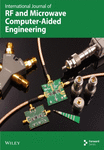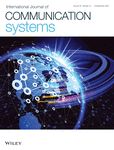Reviewer Guidelines
We acknowledge that time is a scarce resource. Therefore, we greatly appreciate our reviewers for contributing their valuable time and expertise to maintaining the standards of our journals. Reviewers are encouraged to consult our step-by-step guide to reviewing a manuscript, available here. For further information and support see Wiley's resources for reviewers.
Understanding Bias in the Peer Review Process
Peer review helps to maintain the integrity of scholarly research. Reviewers should be mindful to guard against biases, both explicit (one’s attitudes, beliefs, and prejudices at a conscious level) and implicit (one’s attitudes, beliefs, and prejudices, based on their background and experience, which are not consciously recognized).
A common example of explicit bias that my compromise the impartiality of peer review is a conflict of interest, such as:
- relation to any company and/or commercial product mentioned in the manuscript
- collaboration with author of the manuscript
- personal relationship (good friend, advisor, colleague, mentorship, etc.) with the author
- competing research interests
If a conflict exists, please decline the invitation to review. Should you require clarification regarding a potential conflict of interest, please contact the journal and seek advice. While waiting for a response, refrain from looking at the manuscript and associated material in case the request to review is withdrawn.
Peer review assessment may be unconsciously influenced by bias related to:
- gender, sex, race, ethnicity, sexual orientation, religion, and age, among others
- geographical location
- language or writing style
- author’s institution
- career stage
- journals where the author’s previous work has appeared
- previous awareness of the author and their research
Everyone experiences biases. The aim is to critically examine the impact that potential biases may have on your decision-making process, and ways to mitigate bias include:
- slowing down decision making and allowing sufficient time for critical assessment
- focusing on the facts rather than your feelings
- treating the manuscript as though author name, institute, etc. are unknown (if these details are disclosed to you)
- challenging stereotypes
- challenging how you assess the value and impact of the research content
- taking on the perspective of the author
- evaluating reasons for your decision and conclusions
Suggesting Alternative Reviewers
When suggesting alternative reviewers, be mindful that they represent diversity, taking into consideration:
- geographical location
- type and/or size of institution
- industry or academia or practitioners
- career stage
- gender and intersectional diversity (belonging to more than one social category simultaneously)
- expertise (including outside immediate field if warranted, for example, for multidisciplinary research)
Bias in Research Content
When reviewing research content, be sure to pay attention to:
- the use of discriminatory language and/or graphical material
- sample diversity: has the study used appropriately diverse samples? If using human participants, animals, or biological material, diversity factors (gender, ethnicity, age, socioeconomic status, etc.) that are relevant to the research question should be sufficiently reported or discussed
- citation diversity: is the citation list truly representative of previous research? Under-represented and minority groups may be under-cited or absent, while some authors may be overly represented
- potential 'helicopter' (otherwise known as 'parachute') research, where authors from wealthy countries conduct research in developing counties without the involvement of local researchers, thus providing little to no benefit of the research to those communities
Writing the Report
When writing the reviewer report, make the effort to:
- be mindful of potential biases
- be clear and concise in your writing to avoid any ambiguity
- use inclusive language (e.g. avoid idioms, use gender-neutral language)
- avoid unsubstantiated comments and negative language
- focus comments on content
- be aware of tone; a negative tone can detract from valuable feedback
- provide constructive feedback on areas for the author to address, as this can help them be better prepared the next time they submit a manuscript
- if suggesting additional citations, ensure that they add to the scholarly content of the article and are not biased towards particular authors and/or journals in the field





